Disclosure: Meeple Mountain received a free copy of this product in exchange for an honest, unbiased review. This review is not intended to be an endorsement.
The Vikings: a nautically advanced culture originating in Scandinavia before the last millennium. They irrevocably changed the world, with traces found as far apart as Newfoundland and Baghda–
Hang on.
Today we’re talking about Vikings Gone Wild, a card game that merrily eschews realism and fully commits to the Scandinavian stereotype. These are Nordic ninjas and Baltic berserkers, with horns on their helmets and beer in their beards. Welcome to the world of sheep cannons, elf archers and magic hammers.
In Vikings Gone Wild players represent Viking clans, vying for victory points by attacking, defending and developing, as well as through achieving individual and communal goals. As Sól sets on the game, the highest scoring Viking clan wins. Simple.
Vikings Gone Wild is a deck builder: players each have a deck of cards which they add to and improve over the course of the game (check out other deck builders here). Crucially, it’s a deck builder where player interaction is embedded in its very core. Each player starts with a single building (the Town Hall) and a deck of 10 cards consisting of beer, gold and Viking warriors. On their turn players can buy cards, attack their opponents and achieve goals. Let’s take a closer look.
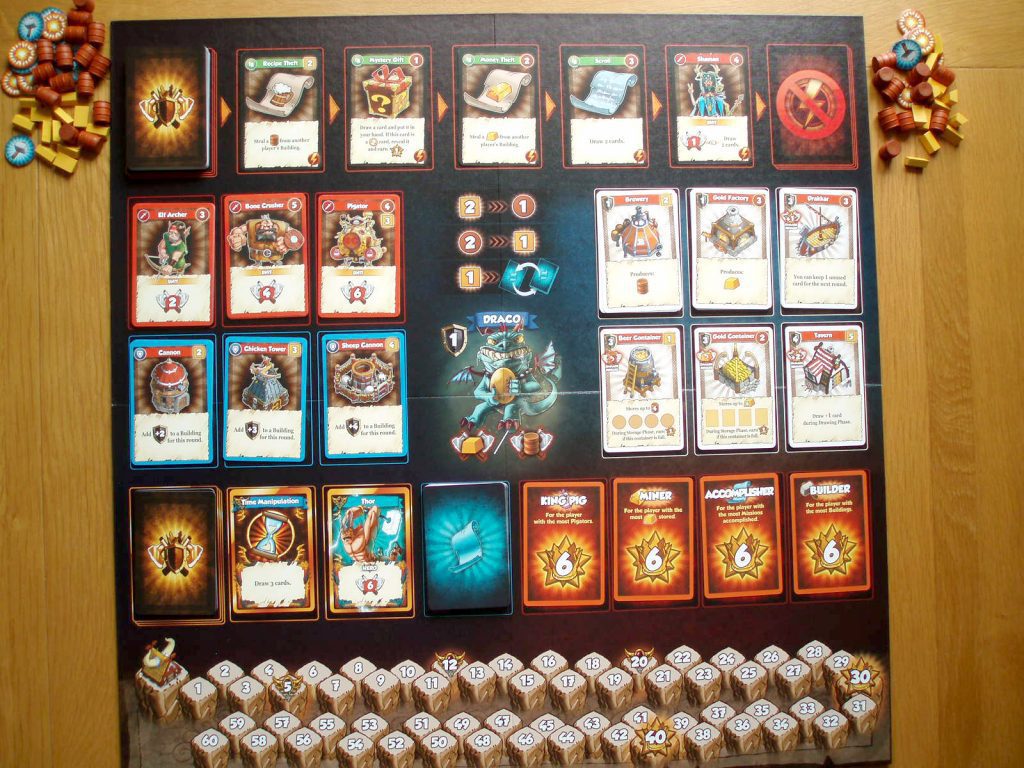
Buying Cards
Cards can be purchased from the top two-thirds of the board using combinations of beer and gold. In most deck builders the market of cards is either static (the same cards all game) or a river (a constantly changing selection of cards). Vikings Gone Wild does both.
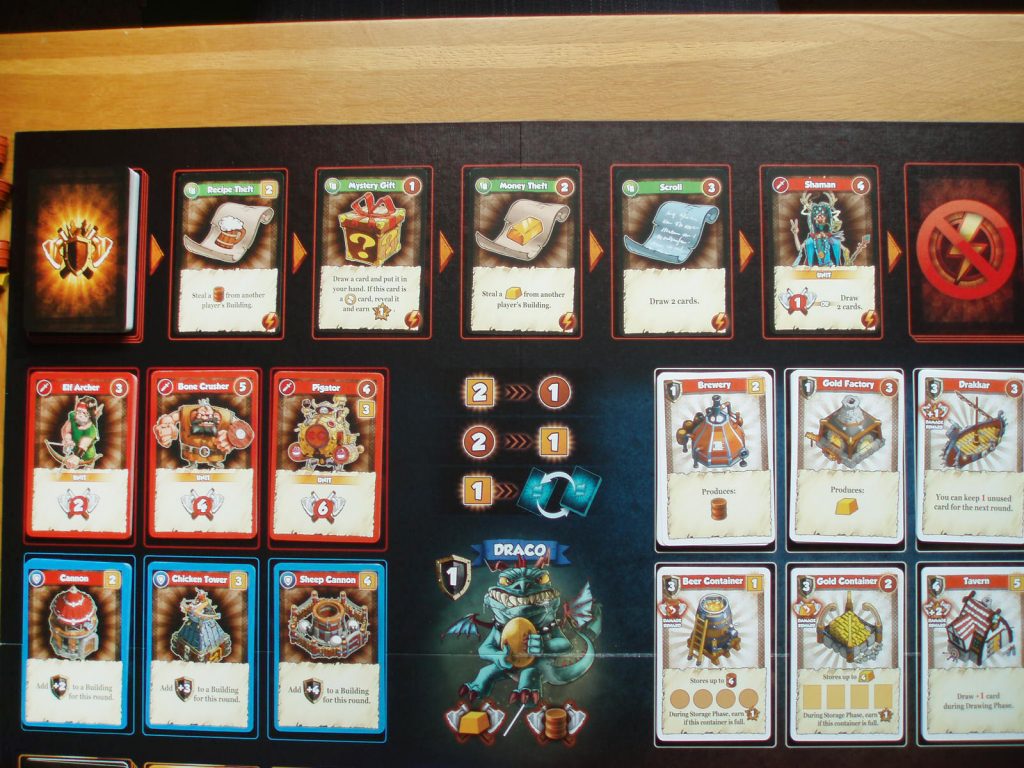
The static Units (used for attacking) and Defence cards go into your deck, whilst Building cards are permanent features and can do nifty things like storing extra gold/beer or increasing your hand limit. Odin’s Path cards flow in a river along the top of the board and are a hodgepodge of useful items, special abilities and combatants.
Players can also purchase upgrades to their Town Hall, increasing its defence and the number of buildings they’re allowed to have. All this retail choice means you can be working out what to purchase for a while and, unless they’re being attacked, your opponents can be waiting patiently for you to finish deciding.
Attacking and Defending
Attacking an opponent’s building gives you points, and defeating several buildings in a row rewards you with even more points. Successfully attacking is simply a case of comparing your attack score against a building’s defensive score – equal or more and you win. But your intended victim can protect their buildings with cards from their hand, stealing the points you so rightfully attempted to pillage!
You can only attack one player per turn and previously attacked players are generally safe for the remainder of the round. What’s more, buildings don’t take damage so defeat rarely sets you back. It’s a nice system, providing plenty of incentives to both attack and defend without being overly harsh.
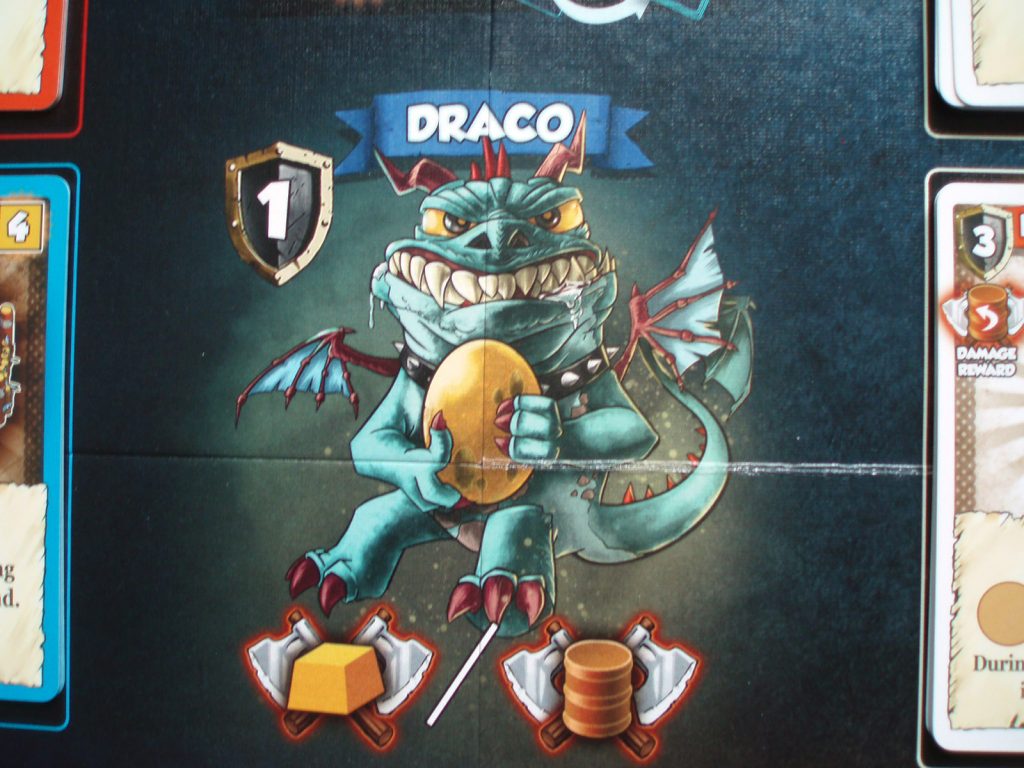
The game itself also provides opponents in the form of the Undead and Draco, who reward you with resources and/or points. Being permanently on the board, Draco ensures that even if you’ve only got a single Viking warrior in your hand it’s not wasted.
Achievements
Whilst the market and combat aspects of Vikings Gone Wild are its central ingredients, the favours, missions and bonuses add flavour, sweetness and heat to the experience. During the game you can earn Divine Favours; super-powered cards that slip into your deck like an extra shot of espresso in your coffee. When one of them pops up in your hand it’s like Odin has smiled on you and anything is possible. In a welcome piece of design, their requirements are low enough that everyone around the table will have several occasions to feel their celestial power by the game’s end.
The missions are individual player tasks that reward you with points when completed: spend a certain amount in a turn, successfully attack another player, etc. Sometimes you might aim to achieve a mission but often it’s a happy coincidence that your plans align with one. Keeping the missions ticking over can be quite moreish: complete a mission, claim the prize then pick up a new one.
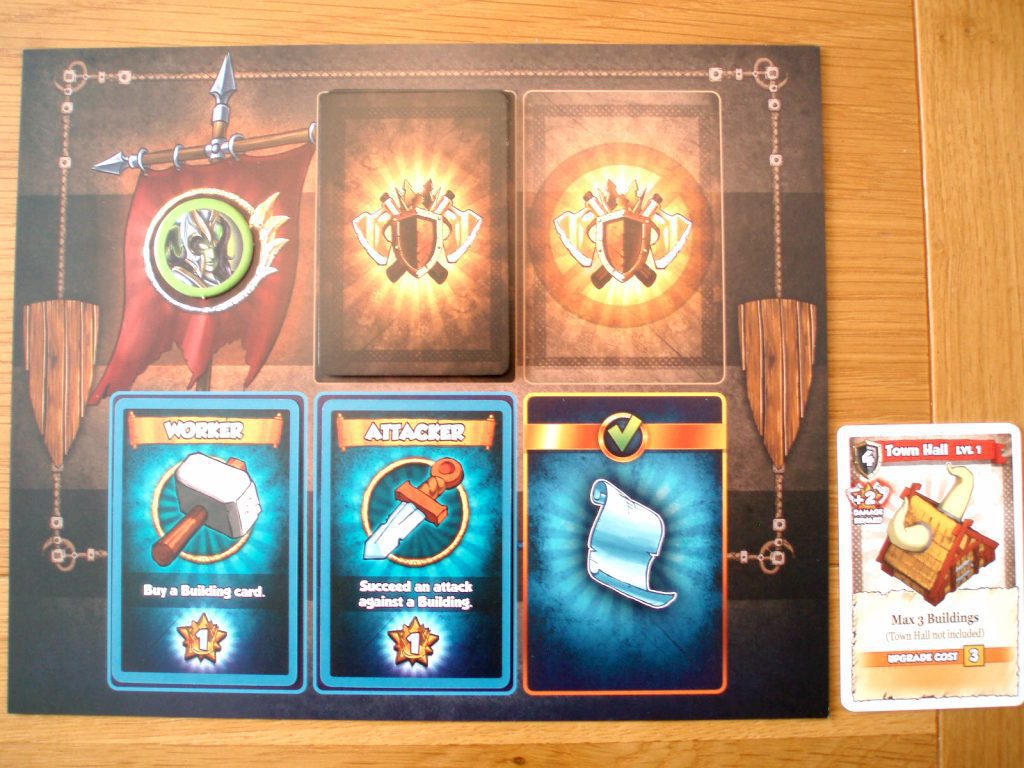
The four end-game bonus cards do exactly what their name suggests: award points at the end of the game. They’re definitely worth paying attention to as they can reward players with the most buildings, beer stored, unit cards in their deck etc. If combat doesn’t interest you (and what sort of cartoon Viking wouldn’t enjoy attacking?) then the missions and bonuses are another path to victory.
Thor-ghts
I was being disingenuous when I said that Vikings Gone Wild embraces the stereotype: there’s more to these Vikings than simple squabbles. Whilst building a gold container doesn’t sound especially wild, the adverb is more applicable to the absurdity of what Vikings Gone Wild lets you get away with. All deck builders tap into the giddy thrills of chaining card combinations together and the Divine Favours and permanent buildings only enhance this feeling. When your hand limit has stretched to 8 and you’ve been able to hang onto cards from the previous round, you just know that this is going to be a turn for the bards.
With so many different areas to it, Vikings Gone Wild is a game that wants to have a longboat worth of cakes and eat them all. Building, developing, attacking, defending, missions, goals and so on. While it isn’t complicated, when you sit down to play for the first time it’s a little… much? There are 17 cards available to buy, 2 Divine Favour cards visible to win, 4 communal end-game bonus cards, plus players’ individual mission cards and any buildings they’ve constructed. It adds up. Thankfully, it doesn’t take long before the myriad of cards start to make sense and you’re trading beer and gold like it’s the year 999.
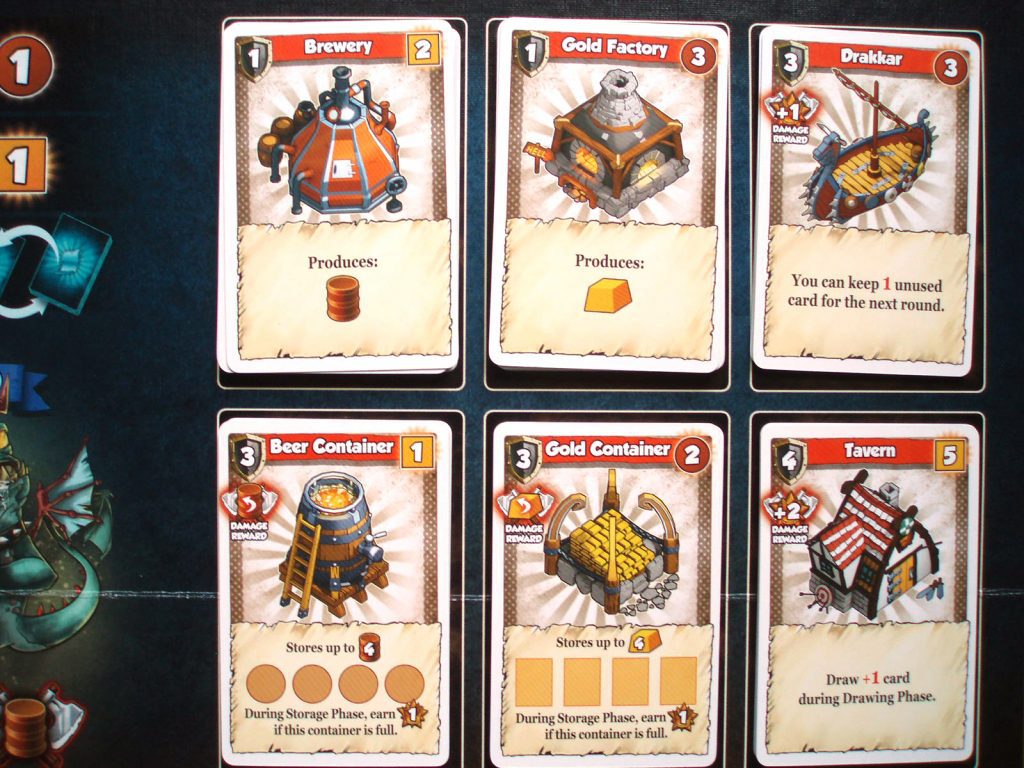
It feels magnificent, although gluttony can have its own problems when at the far limits of indulgence. A fistful of gold only goes so far before the excitement wears off, and your ability to attack may be hampered by who is available to be attacked and how much they have invested in buildings. Happily, your opponents should be hamstringing you throughout, preventing you from building an engine that outstrips the scope of the game.
Yet despite all the axes this isn’t a combat-focused deckbuilding game either. In fact, it’s remarkably bloodless. The cruellest elements come from raiding another player’s storage container (and looting their hoarded beer/gold) and a few take-that style cards. If you long for a deck builder of carnage and destruction you may be disappointed (check out Justin Gibbon’s Carthage review instead). But for everyone else it’s great – it satisfies the inner berserker without ever feeling personal.

There’s even a bluffing element with players hanging on to defensive cards after their turn in case of attack. Is that a Chicken Tower they’re holding or simply a tankard of beer? It doesn’t always work – target choice is often based on who’s available to be attacked rather than their defensive potential – but when it does it’s immensely satisfying. And it’s genuinely exciting when you’re first player and everyone is fair game but are all holding handfuls of cards.
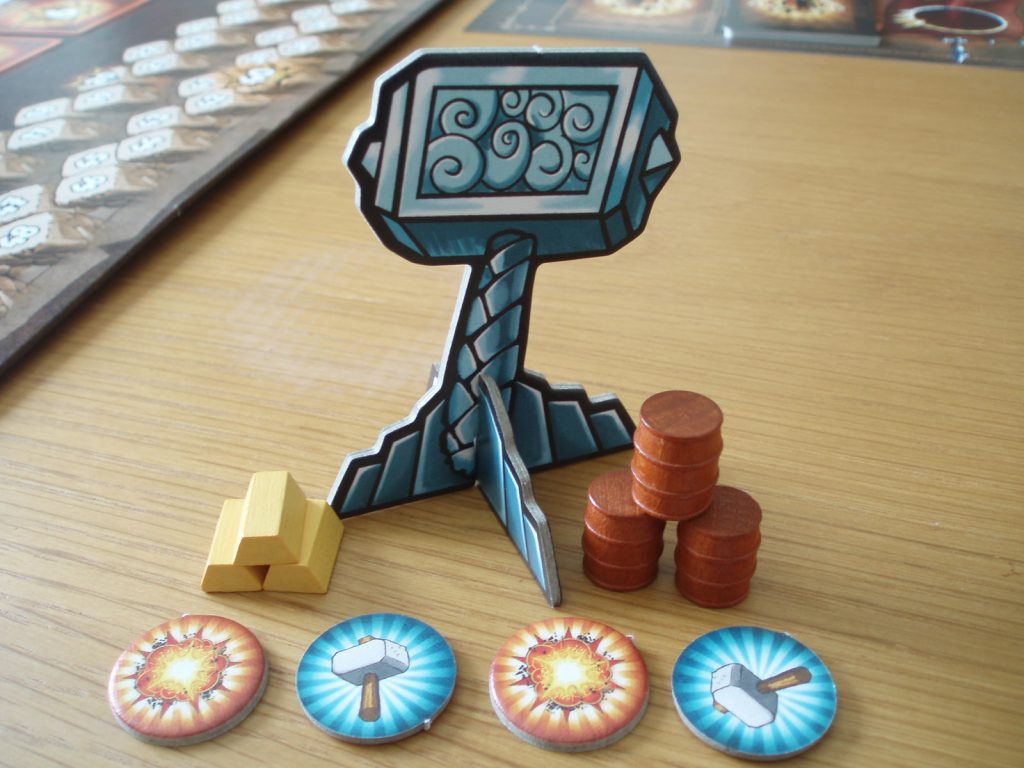
Vikings Gone Wild, then, is a game that wants all the cakes but can only manage a bite from each. Yet this is its strongest feature: it “scratches different itches” and creates something that’s so much more than the sum of its parts. That it does this with a straightforward ruleset is remarkable. You might dabble in combat, go on a spending spree, target a mission or do a bit of everything, all in a single turn. Riding this chaotic hodgepodge of ideas, reacting to the cards in your hand and the actions of your opponents is hugely entertaining!

Also, despite being a bit of a table hog, it looks fantastic. The card art is packed with character and humour, honouring its video game heritage without being restricted by it, whilst the overall design is admirably accessible. Lucky Duck Games is a studio that specialises in video to board game conversions (see the recent Jetpack Joyride) and they’ve done it again here. Vikings Gone Wild really is very good… with two small caveats.
Firstly, whilst the box claims 2-4 players, it’s best at 3 or 4. The fun card combinations are there at 2 players but the attacking/defence aspect is slightly formulaic, noticeably missing an anarchic element.
Secondly, the glut of cards feels like one of Loki’s deceptions – after one game you’ve experienced most of what Vikings Gone Wild has to offer. I found myself wanting just a bit more invention and variation. The artwork of the three static Unit cards masks the fact that they’re just incrementally more powerful versions of each other (likewise the Defence cards), whilst the 40 Odin’s Path cards only contain 17 unique cards. Significantly, the two currencies (gold and beer) restrict things further – many cards do exactly the same thing just with the other currency. There’s plenty of choice but less variety.

In Summary
I’ve really enjoyed playing Vikings Gone Wild. The number of different areas of the game may initially feel like cake-overload but they gel together seamlessly to create a confectionary delight. The original Kickstarter campaign added more cards to pretty much every area of the game and these would be an easy buy if they were available to purchase to add some variability after a few playthroughs. And, of course, there are several expansions for those looking to change things up in a more dramatic fashion… Interested? Check out our review of the expansion Vikings Gone Wild: Masters of Elements.






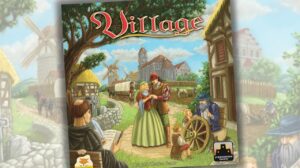




Add Comment